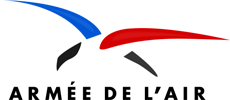RAF No. 326 'Nice' Squadron or GC II/7
RAF No. 326 'Nice' Squadron or GC II/7
Motto: - No Badge Authorised
Formed on 1 December 1943 by renumbering a French unit based in Corsica and together with No 327 and 328 Squadrons, it formed a Free French fighter Wing on the island.
The Wing covered the Allied landing in Southern France in August 1944 and in September moved to Alsace-Lorraine, where they flew offensive patrols supporting the First French Army on its advance into Germany.
Initially equipped with Spitfire VB/Cs, and IXs, by April 1944 the Mk Vs had gone and the squadron operated the Mk IX until November 1945, when it ceased to be a RAF unit.
Squadron Codes used:
QU: Allocated Apr - Sep 1939
91: Dec 1943 - Nov 1945
Web Reference: http://www.rafweb.org/Sqn310-347.htm#326
One squadron, two identities: GC 2/7 (No.326 “Nice” Squadron) (1943-1945)
Altogether, under the umbrella of the USA (not just in North Africa, but also in Sicily and Corsica), there were nine FAFL fighter groups, three of which were (interestingly enough) designated as RAF fighter squadrons, namely No.326 (“Nice”), No.327 (“Corse”) and No.328 (“Provence”) Squadrons, with other units similarly named after regions in metropolitan France, namely Roussillon, Champagne, Navarre, Lafayette, Dauphiné and Ardennes. Similarly, there were six bomber groups (Bretagne, Maroc, Gascogne, Bourgogne, Sénégal and Franche-Comté), one reconnaissance group (Belfort) and one transport group (Anjou).
Following the dissolution of the Vichy French naval aviation arm, the second escadrille of the combat fighter group GC II/7 accepted several navy pilots into its ranks. In March 1943, it received its first British aircraft, namely examples of the Supermarine Spitfire Mk.Vb fighter plane. When GC II/7 was broken up in August, the squadron received two designations - one of which was French, the other British - by virtue of the fact that its complement included both French and British pilots. While the British designated the unit No.326 Squadron of the RAF the French knew their squadron as GC 2/7, even though it was attached to No.345 Wing of the Mediterranean Allied Coastal Air Force (MACAF). Its first mission as GC 2/7 was an armed reconnaissance mission on April 30, 1943, during the final phase of the war in North Africa, by which time the Luftwaffe had all but vanished, but ground-based Flak units still remained. By May 13, the Germans had surrendered in North Africa, and GC 2/7 had by then flown 42 missions, accumulating 296 sorties. On June 18, the squadron supplanted its aged Mk.Vb Spitfires with the more agile and maneuverable Mk.IX variant, built originally to combat the much vaunted Focke-Wulf Fw 190, an example of which had been credited to GC 2/7 just seven days earlier.
September 1943 witnessed the participation of GC 2/7 in the liberation of Corsica, claiming seven enemy aircraft destroyed for the loss of two of its pilots. On the 27th, the squadron, alongside GC 1/3, had the distinction of becoming the first Armée de l'Air unit to be stationed on French soil, since the dissolution of the Vichy French air force the previous December, when it occupied the airfield at Ajaccio-Campo dell’Oro. Now part of No.332 Wing, the squadron’s duties encompassed patrols over the island of Corsica itself, interception of German bombers attacking the island, protection of Allied convoys traversing the Mediterranean, attacks against German shipping berthed in Italian ports, and, from January 1944, the escort of USAAF bombers attacking targets in Italy. From the spring of 1944, GC 2/7 would involve itself both in strafing and dive-bombing attacks against ground targets in coastal regions of western Italy as well as the island of Elba, famous as the place of temporary exile of Napoleon in 1814 prior to his escape.
Finally, in September 1944, GC 2/7 found itself based in metropolitan France itself and was assigned to the same kind of missions that it had conducted over Italy. However, its commanding officer, Captain Georges Valentin, was shot down by flak over Dijon on the 8th, while another, Captain Gauthier, was shot down a week later, only he managed to reach Switzerland from where, having been interned, he “escaped” to rejoin his unit. As the front line advanced eastwards towards Reich territory, GC 2/7 went to Luxeuil, from where missions flown in early October resulted in four enemy aircraft being confirmed destroyed and another one counted as a “probable”. Christmas Eve saw GC 2/7 escorting B-26 bombers. “Around 20” enemy fighters attacked the formation, and GC 2/7 claimed four of them destroyed, but the French lost one of their pilots in the process.
GC 2/7 frequently clashed with the enemy as the Allies advanced farther into Nazi Germany - including a sighting of two Messerschmitt Me 262 jet fighters on March 22, 1945, who were just too fast for the piston-engined Spitfires. On April 14, sixteen of the squadron’s aircraft were escorting Lockheed F-5s when they were intercepted by a mixed formation of Bf 109s and Fw 190s, two of which were claimed by GC 2/7 pilots, yet one pilot was shot down and became - for the brief duration that the war in Europe yet had to run - a prisoner. By the time the war did end on May 8, GC 2/7 had, since its formation two years earlier, accomplished just over 7,900 sorties.

Fighting for Free France — the FAFL in French North Africa (1940-1943)

 Editor for Asisbiz: Matthew Laird Acred
Editor for Asisbiz: Matthew Laird Acred
If you love our website please add a like on facebook
Asisbiz has been running since July 2006 and can continue to run with your kind help!
Please donate so we can make this site even better !!